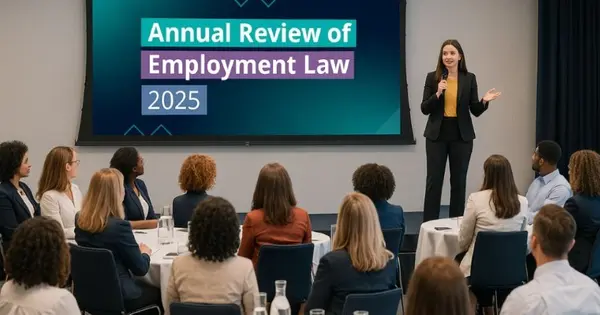Jason Elliott was called to the Bar of Northern Ireland in 2013 and is the Associate Head of School of Law at Ulster University. As a practising barrister, he has developed a largely civil practice representing individuals, companies and public bodies in litigation. This covers a wide range of areas including personal injuries, wills and employment law. In terms of employment law, he has represented both applicants and respondents in the Industrial Tribunal. At Ulster University, Jason lectures extensively on the civil areas of practise such as Equity and Trusts and delivers employment law lectures for both undergraduate and postgraduate students.
The claimants in this case were self-employed barristers in private practice in Northern Ireland. The claimants had similar characteristics in that they had previously worked as solicitors before transferring to the Bar. The respondents were the governing bodies of barristers in Northern Ireland. The case focused upon age discrimination in relation to the workings of a fee subsidy scheme. The fee subsidy scheme worked on the basis that where an individual who transferred from the solicitor profession would enter into the sliding scale (up to the maximum of seven years) of the subsidy scheme. All three claimants had been solicitors for longer than seven years prior to being called to the Bar and for that reason they were completely ineligible for the subsidy. It must be noted that this involved the 2004 scheme which was later replaced in 2014 (but was not up for consideration at the Tribunal).
The claimants’ case was that they were subject to direct and indirect discrimination on the basis of age contrary to the Employment Equality (Age) Regulations (NI) 2006. They stated their hypothetical comparator was a 22-year-old who came to the Bar straight from University and had not been in previous employment. The claimants further asserted that there was ‘old-style protectionism’ to protect those who did not have previous employment experience. The respondents stated that it was improper to suggest that the comparator should not have previous employment. Furthermore, the respondents stated that there were real advantages obtained by those who have come from a background of experience such as only having a three month pupillage (compared to six for those without such experience) and that those with experience did not have to wait as long for a desk. The claimants suggested there was a specific intent to treat younger people more favourably with Mr Simpson QC stating in his 2004 paper that it was to assist ‘young persons’ which was also mentioned more recently by Michael Humphreys QC. The respondent stated that it did not outline a specific intent. There were a range of arguments noted by both parties as to the working of the subsidy scheme to demonstrate that it was discriminatory on the basis of age or it was not as seen from the respondent’s perspective.
The Tribunal referred to the Supreme Court decision in Seldon and the factors that have to be considered as to whether any discrimination is justified. Baroness Hale stated that it could reflect ideas of intergenerational fairness’ and a need to share out opportunities fairly between the generations. However, it was for the claimants to first show that they were subject to less favourable treatment before considering whether the respondents could show that it was justified.
The Tribunal outlined that there had been nothing in the evidence to demonstrate that there was a strategy to favour those in their early twenties. Additionally, the reference to young persons by Mr Simpson QC and Mr Humphreys QC was not fertile ground for showing an ulterior purpose but rather was an ‘unsurprising reality’ of the situation in that it would be those in their early twenties availing from the scheme. Accordingly, there was no direct discrimination found.
On indirect discrimination, it was conceded that there was a criterion that created a disadvantage to older entrants. However, this was regarded as proportionate and necessary to ensure that talent was attracted to the profession rather than being stopped for financial reasons. It was held that the scheme was more likely to promote social diversity and to ensure greater public confidence in the reputation of the Bar. Therefore, in taking the case in the round it was held that the scheme was proportionate and necessary meaning that there was no discrimination on the basis of age. The case was dismissed.
Practical Lessons
This case, whilst unusual in its background, demonstrates the uniqueness of how age discrimination operates. With age discrimination there is greater flexibility given to the respondent as was mentioned in Seldon where even direct discrimination can be justified, albeit within limited parameters. There is a need to find a delicate balance between ensuring that those of a particular age are not discriminated against while ensuring that there is a smooth system within workplaces. In this case, the decision erred on the side of the respondent considering the various arguments that had been raised in relation to the subsidy scheme. With cases such as age discrimination, it is likely that they will rest on their own facts and the reasoning for bringing in such practices.
NI Tribunal decisions are available on the OITFET website:
http://www.employmenttribunalsni.co.uk/
Continue reading
We help hundreds of people like you understand how the latest changes in employment law impact your business.
Please log in to view the full article.
What you'll get:
- Help understand the ramifications of each important case from NI, GB and Europe
- Ensure your organisation's policies and procedures are fully compliant with NI law
- 24/7 access to all the content in the Legal Island Vault for research case law and HR issues
- Receive free preliminary advice on workplace issues from the employment team
Already a subscriber? Log in now or start a free trial




